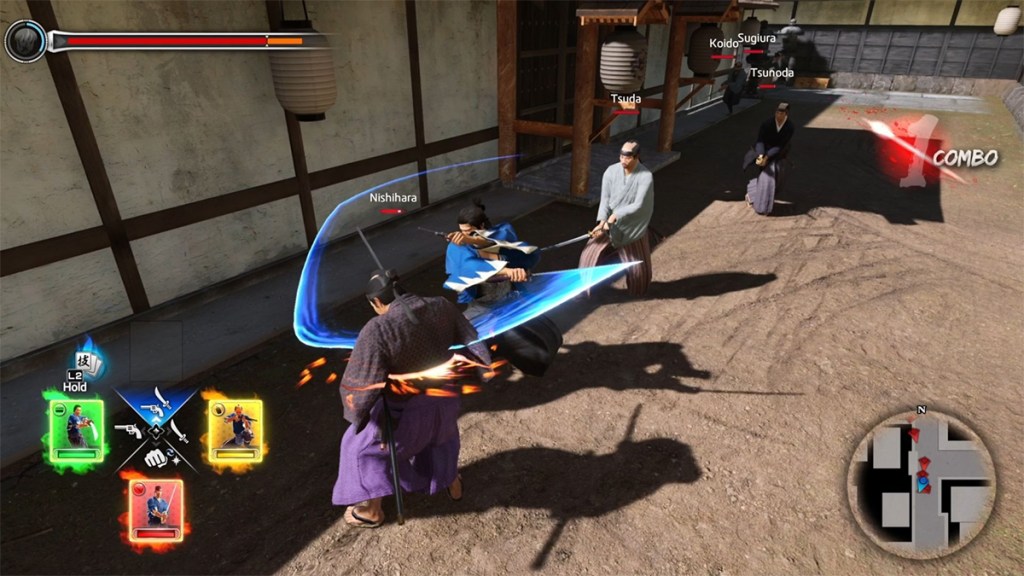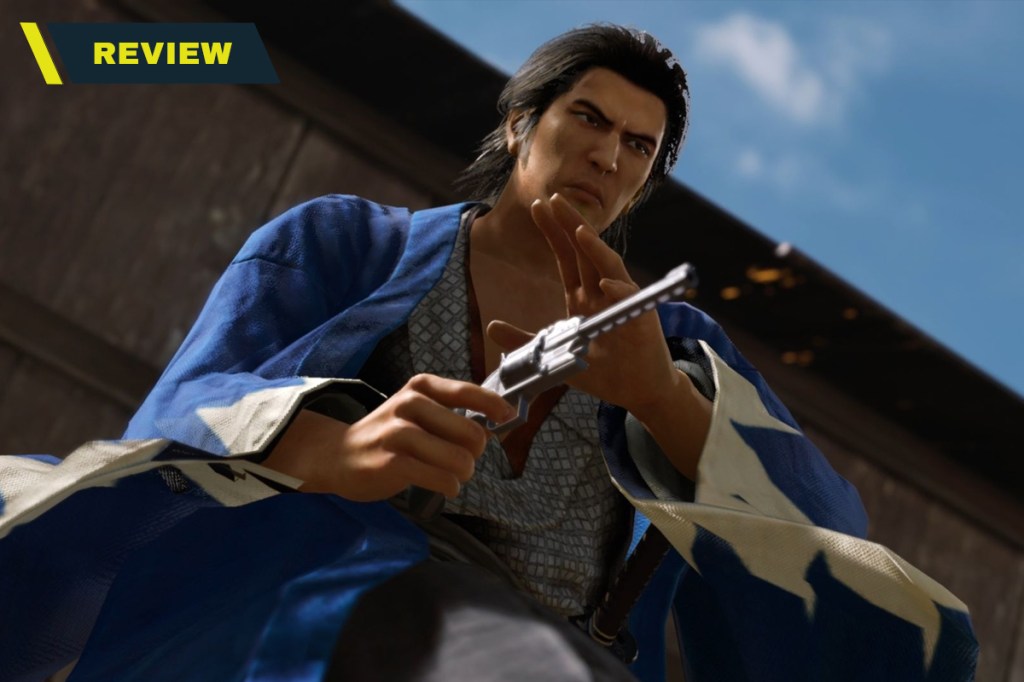The boom in popularity for Sega’s Yakuza series has been a delight to see over the past decade and has opened the door for worldwide releases of obscure spin-offs. Since 2014, fans of the franchise have long wanted to play Like a Dragon: Ishin, which is the second historical spin-off of the series and takes place in 1800s Japan during the later stages of the Edo period. Players control the legendary samurai Sakamoto Ryōma and get to interact (and fight with) plenty of pivotal historical figures of the time not unlike an Assassin’s Creed game. But unlike Ubisoft’s inconsistent powerhouse franchise, this Ishin remake offers a well-spun tale that earns its place within the series, despite its few lingering antiquities.
While it’s a period piece, a lot of Ishin is more relevant than ever. The time period it takes place in was a particularly turbulent time in Japan and both its main story and side quests touch on many of the elements that make it so interesting. Like today, the class system is at the core of much of the injustice, but there’s also an intriguing element of Japan being in a state of flux — a country coming to terms with the outside western world as well, which is symbolized perfectly in its combat of samurai using guns. Ryōma’s search for justice in what is objectively an unjust world and society offers the personal touch a setting like this needs, meaning Ishin has a well-realized setting with a protagonist that offers a welcome human touch to it.
What’s most interesting for longtime fans is that Ishin eventually features an all-star cast of Yakuza characters from throughout the entire series as all of the historical figures feature familiar character models. The most notable example is that Ryōma is just Yakuza series protagonist Kazuma Kiryu in both looks and personality with his unique set of morals and honor system that’s at the forefront of the story and his choices. The remake even has characters from newer entries, so iconic and recognizable faces and voices pop up often in both the main story and substories.
It also imbues these historical figures with an added sense of familiarity and reasons for players to care about them since their personalities from the prior games are also intact. For example, if someone shares the character model of a past villain, it’s cleverly foreshadowing bad news. Likewise, seeing a character die in the story resonates more because of that existing knowledge of them, even if it’s technically someone else. It’s not unlike seeing your favorite actor perish in a movie; you can’t fully separate your memories and feelings toward them from what you’re seeing. It’s quite the unique approach for such a narrative-based game, and this familiar cast winds up working in its favor because of those established roots.

Like the other recent Yakuza and Judgment games, there are multiple different fighting styles available for players to use during brawls. However, what sets Like a Dragon: Ishin apart is that each style is weapon-based. Rather than these tools of destruction being limited-use items, they’re fully integrated into combat as you’ll be using guns to shoot from a distance and katanas to slice enemies up close. It’s an interesting change and one that mostly works, although there are enough rough edges that show that this system needed to be iterated upon in order to unlock its true potential.
In its current form, combat is very uneven (although this isn’t exactly a new problem for Yakuza since its actual brawling had always been the weakest element of the series until recently). The guns are particularly broken since players can simply use a pistol with unlimited ammo that doesn’t need to be reloaded to take out enemies from a distance. It’s pretty hilarious — and all too easy — to just stand far away and essentially play a game of violent keep-away. Some enemies do have ranged attacks, but that doesn’t nullify this strategy.
Using swords to kill foes is a more enjoyable because it is much more engaging, yet it comes at the expense of making Ryōma far more vulnerable. Even if you do opt for the greater challenge, the overall swordplay lacks the depth that these samurai encounters would need to feel truly epic. There are combos, but it’s still very straightforward and too basic to be one of the stronger parts of the experience. It’s just a side product of a sword being slapped onto the existing Yakuza combat system rather than Ishin being a game built around swordfighting like Ghost of Tsushima with its multiple stances and stamina meters.
The cards that were previously tied to the Battle Dungeon mini-game have now been folded into the core game and they vary up the brawls quite a bit by adding over-the-top special attacks. But even with these tweaks, the combat never becomes quite as fun as in Lost Judgment or other recent entries; an unfortunate byproduct of its age and the fact that this isn’t a complete Kiwami-esque remake.
While this remake focuses on refinement rather than sweeping changes, it is interesting to note that it now runs on Unreal Engine 4 as opposed to Ryu Ga Gotoku Studio’s Dragon Engine. The developer is seemingly moving away from it, and this game appears to be its attempt at getting used to Unreal. While the results are far from bad, the change in engine hasn’t made the game less dated. There are many small elements that keep this feeling like the older Yakuza game that it is, such as battles needing transitions rather than being seamless, and it can’t fully shake off its 2014 origins despite the new coat of paint.
Like the rest of the Yakuza series, what really makes Ishin incredible is the breadth of meaningful content. The dozens of side stories give a great look at the turbulent culture at the time, such as a look at the ee ja nai ka protests, while also retaining the series’ sense of humor and wackiness. There’s also an in-depth farming simulator, which is fleshed out to an extent similar to some of Yakuza 5‘s careers, that can be used to make some great money once players invest in it. It sits alongside a wide range of era-appropriate mini-games that have become a calling card of the series (such as fishing, gambling, singing, chicken racing, and so on), all of which flesh out the world and yield more variety.
While it isn’t the best playing game in the Yakuza series, Ishin remains a a great title and an essential experience for fans. This is due to its stellar embrace of Bakumatsu era Japan, unique fan service, and a compelling storyline that lives up to the series’ high standard. While its 2014 roots are still apparent, this is a solid remake that fleshes out the experience with a few meaningful additions and finally makes this underrated gem available to a mass audience.
SCORE: 8.5/10
As ComingSoon’s review policy explains, a score of 8.5 equates to “Great.”
Disclosure: The publisher provided a PlayStation 5 copy for our Like a Dragon: Ishin review. Reviewed on version 1.001.000.










